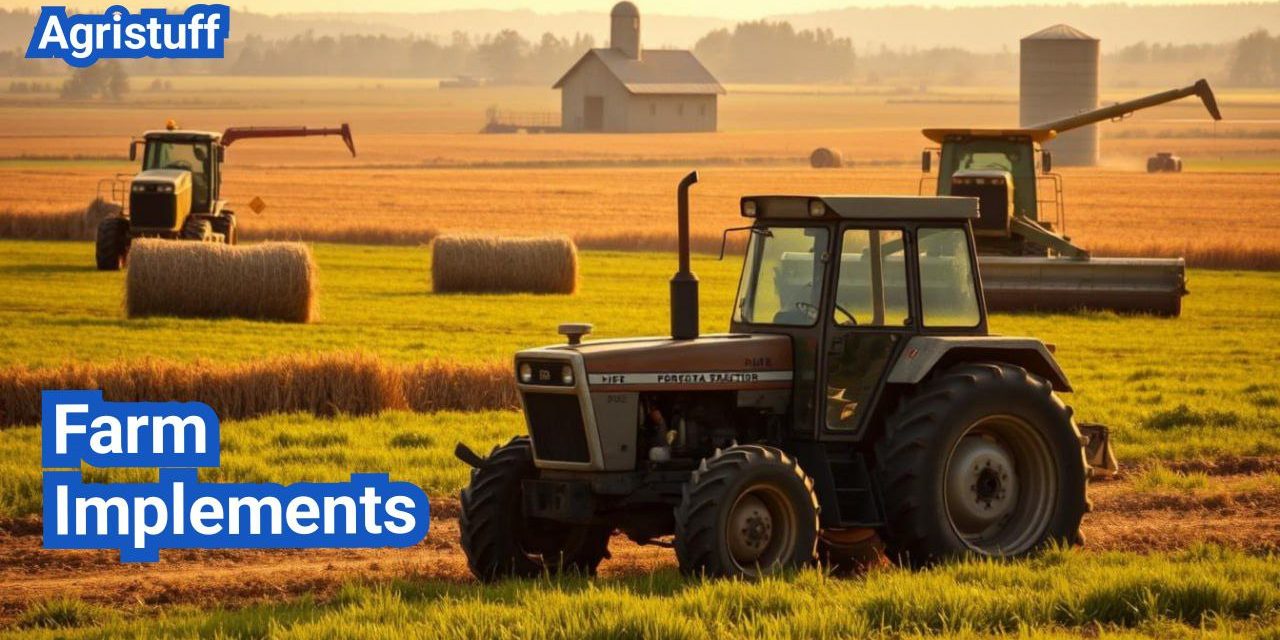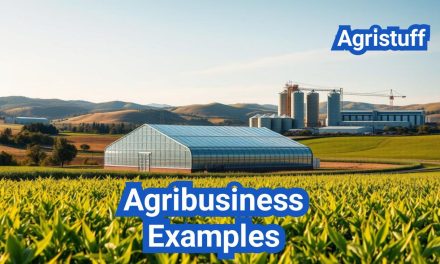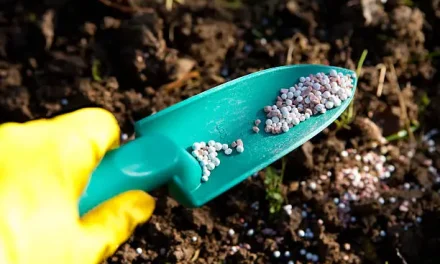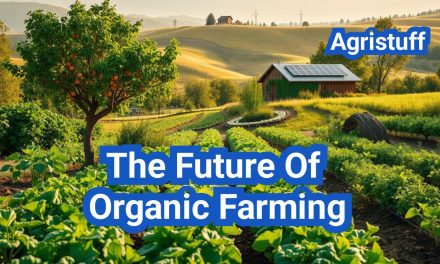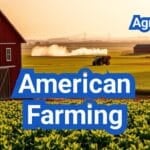Agricultural practices rely heavily on the right equipment to facilitate various farming operations. The term “farm implements” refers to the tools and machinery used to enhance efficiency and productivity in agriculture.
From simple hand tools to complex machinery, farm implements play a crucial role in modern agriculture. Understanding the different categories and their uses is essential for efficient farming practices.
Key Takeaways
- Farm implements are vital for efficient agricultural practices.
- Various types of implements are used for different farming operations.
- Understanding the uses of different farm implements is crucial for modern agriculture.
- Farm equipment enhances productivity and efficiency in farming.
- The right agricultural implements can significantly impact farming outcomes.
Understanding Farm Implements in Modern Agriculture
In modern agriculture, farm implements are indispensable tools that have transformed farming operations. Farm implements are crucial in enhancing efficiency and productivity, allowing farmers to manage their land effectively.
Definition and Importance of Farm Implements
Farm implements are tools or machinery used in agricultural operations to improve the quality and quantity of produce. They are designed to make farming easier and more efficient, from preparing the soil to harvesting crops. The importance of farm implements lies in their ability to reduce manual labor, increase productivity, and enhance crop yields.
As agricultural implement technology advances, it provides farmers with more sophisticated tools to manage their farms. These advancements have led to improved farming practices, contributing to the overall growth of the agricultural sector.
“The introduction of farm implements has been a game-changer in agriculture, enabling farmers to cultivate and harvest more land with less labor.” – Agricultural Expert
The Difference Between Farm Implements and Equipment
While often used interchangeably, farm implements and equipment have distinct meanings. Farm equipment refers to the machinery used in farming, such as tractors and harvesters, whereas cultivation implements are tools used for specific agricultural tasks like tilling, planting, and harvesting.
Understanding the difference between these categories is vital for farmers to make informed decisions about their farming operations and to optimize their use of resources. The various categories of farm implements cater to different needs, from soil preparation to crop management.
By recognizing the role and importance of farm implements, farmers can improve their agricultural practices, leading to better crop yields and more sustainable farming methods.
Historical Evolution of Farm Implements

From simple hand tools to complex machinery, the evolution of farm implements is a story of innovation driven by the need for increased efficiency and productivity in agriculture.
The history of farm implements dates back thousands of years, with early farmers relying on basic tools made from wood, stone, and later, metal. The development of these early implements was crucial for the advancement of agriculture, allowing for the cultivation of larger areas and the production of surplus food.
From Hand Tools to Mechanized Farming
The transition from manual labor to mechanized farming marked a significant turning point in agricultural history. The introduction of the plow, for example, revolutionized farming by enabling the efficient turning of soil. Early plows were made of wood and later improved with iron and steel, significantly enhancing their durability and effectiveness.
The Industrial Revolution brought about further significant changes with the introduction of mechanized farm equipment. Tractors and other machinery replaced many manual tasks, greatly increasing the scale and efficiency of farming operations.
| Period | Significant Farm Implements | Impact on Agriculture |
|---|---|---|
| Prehistoric Era | Hand tools (e.g., stone sickles, wooden hoes) | Basic cultivation and harvesting |
| Ancient Civilizations | Early plows, irrigation tools | Increased crop yields, expansion of arable land |
| Industrial Revolution | Tractors, mechanized plows, threshers | Mechanization of farming, increased productivity |
Vintage and Antique Farm Implements
Vintage and antique farm implements are not only relics of the past but also serve as a testament to the ingenuity of our ancestors. Collectors and historians value these implements for their craftsmanship and the insight they provide into historical farming practices.
Examples of vintage farm implements include old tractors, plows, and harvesting equipment. These items are often restored and preserved, serving as a link to the agricultural heritage of past generations.
The study of historical farm implements provides valuable insights into the development of agricultural practices and the technological innovations that have shaped the industry.
Types of Farm Implements and Their Classifications
Understanding the different types of farm implements and their classifications is vital for efficient farming practices. Farm implements are diverse tools used in agriculture, and their categorization helps farmers select the right equipment for their specific needs.
Primary Classification Systems
Farm implements can be categorized in various ways, including by their function, power source, and complexity. The primary classification systems include categorizing implements based on their use in different farming operations such as tillage, planting, and harvesting.
Functionally, farm implements can be classified into several categories:
| Category | Description | Examples |
|---|---|---|
| Tillage Implements | Used for preparing the soil for planting | Plows, Harrows, Cultivators |
| Planting Implements | Used for sowing seeds | Seed Drills, Planters |
| Harvesting Implements | Used for gathering crops | Combine Harvesters, Forage Harvesters |
Power Source Considerations
Another way to classify farm implements is by their power source. This includes:
- Manual Implements: Operated by hand, suitable for small-scale farming.
- Animal-Drawn Implements: Pulled by animals, used in traditional farming practices.
- Mechanized Implements: Powered by tractors or other machinery, ideal for large-scale farming.
The classification of farm implements based on their power source is crucial for determining their suitability for different farming operations and scales.
Essential Tillage Farm Implements

In modern farming, tillage implements play a vital role in soil preparation, directly impacting crop yields and farm productivity. Tillage equipment is used to prepare the soil for planting, and it includes a variety of implements designed to loosen, aerate, and smooth out the soil.
Plows and Their Variations
Plows are among the most critical tillage implements, used to turn over the soil, bringing fresh soil to the surface while burying weeds and crop residues. There are several types of plows, including moldboard plows, chisel plows, and disc plows, each designed for specific soil types and conditions.
Moldboard plows are traditional and effective for turning over the soil, while chisel plows are better suited for breaking up compacted soil without turning it over. Disc plows, on the other hand, use rotating discs to cut through the soil, making them ideal for areas with heavy residue or hard soil.
Harrows and Cultivators
After plowing, harrows and cultivators are used to refine the soil, removing weeds and preparing a smooth seedbed. Harrows come in various forms, including disc harrows and tine harrows, while cultivators are used for deeper soil preparation and weeding.
Disc harrows are versatile and can be used for both primary and secondary tillage, cutting through crop residues and weeds. Tine harrows are more suited for lighter soils and are effective for weeding and soil aeration.
| Implement | Primary Use | Soil Type |
|---|---|---|
| Moldboard Plow | Turning over soil | Variety of soils |
| Chisel Plow | Breaking up compacted soil | Compacted soils |
| Disc Harrow | Secondary tillage, weeding | Soils with heavy residue |
Subsoilers and Rippers
Subsoilers and rippers are deep tillage implements used to break up compacted soil layers, improving drainage and soil aeration. They are particularly useful in soils that have been compacted by heavy machinery or have natural hardpans.
Subsoilers work by penetrating deep into the soil, shattering compacted layers without bringing them to the surface. Rippers are similar but often used in more challenging soils or for more aggressive soil disruption.
By understanding the different types of tillage implements and their uses, farmers can make informed decisions about soil preparation, ultimately enhancing crop yields and farm efficiency.
Planting and Seeding Implements
Planting and seeding implements play a vital role in modern agriculture, enhancing efficiency and productivity. These specialized tools are designed to optimize crop yields by ensuring accurate and timely planting.
Seed Drills and Planters
Seed drills and planters are crucial for precise seeding, allowing farmers to sow seeds at the correct depth and spacing. This precision reduces waste and improves crop yields. Modern seed drills are equipped with advanced technology, such as GPS guidance, to further enhance accuracy.
Key Features of Seed Drills and Planters:
- Precision seeding capabilities
- Adjustable depth and spacing control
- Integration with GPS technology for enhanced accuracy
Broadcast Seeders
Broadcast seeders are used for spreading seeds over a larger area. They are particularly useful for crops that require a wide dispersal, such as grasslands or cover crops. Broadcast seeders can be mounted on tractors or aircraft, offering flexibility in application.
“The use of broadcast seeders has revolutionized the way we manage large-scale seeding operations, making it possible to cover vast areas efficiently.” – Agricultural Expert
Transplanting Equipment
Transplanting equipment is designed to transfer seedlings from nurseries or greenhouses to the field. This equipment minimizes labor and improves plant survival rates by handling seedlings gently and placing them at the optimal depth.
| Type of Equipment | Primary Use | Key Benefits |
|---|---|---|
| Seed Drills and Planters | Precise seeding | Improved crop yields, reduced waste |
| Broadcast Seeders | Spreading seeds over large areas | Efficiency in covering vast areas |
| Transplanting Equipment | Transferring seedlings to the field | Minimized labor, improved plant survival |
In conclusion, planting and seeding implements are essential for efficient and productive agricultural practices. By choosing the right equipment, farmers can significantly improve their crop yields and overall farm productivity.
Harvesting Implements and Their Functions
Harvesting implements play a crucial role in modern agriculture by streamlining the process of gathering crops. These machines are designed to reduce labor costs, minimize losses, and improve the overall efficiency of the harvesting process.
Combine Harvesters
Combine harvesters are versatile machines that are used for harvesting grain crops such as wheat, corn, and soybeans. They combine the functions of reaping, threshing, and separating the grain, making them indispensable in modern grain production.
The use of combine harvesters has revolutionized grain harvesting by significantly reducing the time and labor required. These machines are equipped with advanced technology, including GPS and automated systems, to enhance their efficiency and accuracy.
Forage Harvesters
Forage harvesters are specialized machines designed for harvesting crops intended for animal feed, such as corn silage and alfalfa. These machines chop the crops into small pieces, making them suitable for storage and later use as livestock feed.
The efficiency of forage harvesters lies in their ability to harvest and process large quantities of crops quickly. This not only saves time but also helps in preserving the nutritional value of the forage.
Root Crop Harvesters
Root crop harvesters are used for crops like potatoes, carrots, and beets. These machines are designed to gently extract the roots from the soil, minimizing damage and loss.
The use of root crop harvesters has become essential in commercial root crop production. They enable farmers to harvest their crops more efficiently, reducing the reliance on manual labor and improving the quality of the harvested produce.
In conclusion, harvesting implements such as combine harvesters, forage harvesters, and root crop harvesters are vital components of modern agriculture. Their functions and capabilities directly impact the efficiency and productivity of harvesting operations.
Common Farm Implements and Their Uses

Common farm implements play a crucial role in streamlining farm operations and improving productivity. These implements are essential for various tasks, from handling materials to maintaining fields. Understanding their uses is vital for effective farm management.
Material Handling Implements
Material handling implements are used for moving goods around the farm, reducing labor, and improving efficiency. Examples include:
- Forklifts and telehandlers for lifting and transporting heavy loads
- Grain augers and conveyors for moving grains and other commodities
- Manure spreaders and loaders for managing livestock waste
These implements are crucial for farms that deal with large quantities of produce or livestock, as they help in reducing manual labor and increasing the speed of operations.
Spraying Equipment
Spraying equipment is used for applying pesticides, fertilizers, and other chemicals to crops. This equipment is vital for crop protection and health. Types of spraying equipment include:
- Boom sprayers for large-scale crop spraying
- Airblast sprayers for orchards and vineyards
- Backpack sprayers for smaller areas or spot treatments
Effective use of spraying equipment can significantly improve crop yields and reduce the risk of pest and disease damage.
Field Maintenance Implements
Field maintenance implements are used to keep the farm in good condition, ensuring that fields are ready for planting and that weeds are controlled. Examples include:
- Land levelers for ensuring even field surfaces
- Rotary cutters for managing crop residues and weeds
- Fence post drivers for maintaining farm boundaries
Regular maintenance with these implements can improve soil health, reduce erosion, and enhance overall farm productivity.
In conclusion, common farm implements such as material handling, spraying, and field maintenance equipment are indispensable for modern farming. Their effective use can lead to increased efficiency, better crop yields, and improved farm management.
Tractor Implements and Attachments

Tractor implements and attachments play a crucial role in modern agriculture, enabling farmers to perform a wide range of tasks efficiently. Tractors are versatile machines that can be equipped with various attachments to perform different tasks, from tillage and planting to harvesting and material handling.
Front-End Attachments
Front-end attachments are designed to be mounted on the front of the tractor, enhancing its capability to handle various tasks. One of the most common front-end attachments is the loader, which is used for material handling, such as loading and unloading hay, manure, or other farm products. Front-end loaders are highly versatile and can be equipped with various accessories like buckets, forks, or grapples to suit different tasks.
Another significant front-end attachment is the blade or snowplow, used for clearing snow or grading land. These attachments are essential for farmers who need to manage large areas of land or deal with snowy conditions.
Rear PTO-Driven Implements
Rear PTO-driven implements are powered by the tractor’s power take-off (PTO) shaft, which transmits power from the tractor’s engine to the implement. Common examples include mowers, which are used for cutting grass or crops, and balers, which are used for bundling hay or straw into compact bales.
Other significant rear PTO-driven implements are rotary tillers and stump grinders. Rotary tillers are used to till the soil, preparing it for planting, while stump grinders are used to remove tree stumps and other debris from the field.
Three-Point Hitch Implements
Three-point hitch implements are attached to the tractor’s three-point hitch system, providing a stable and secure connection. These implements are highly versatile and include a wide range of tools such as plows, cultivators, and seed drills.
Plows are used to turn over the soil, preparing it for planting, while cultivators are used to loosen and aerate the soil, controlling weeds. Seed drills are precision implements used for sowing seeds at the correct depth and spacing, ensuring optimal crop growth.
By understanding the different types of tractor implements and attachments available, farmers can maximize the utility of their tractors, improving efficiency and productivity in their farming operations.
Livestock Farming Implements

Efficient livestock farming involves the use of diverse equipment for feeding, manure management, and handling animals. The right implements can significantly enhance the productivity and sustainability of livestock operations.
Feeding Equipment
Feeding equipment is crucial for ensuring that livestock receive proper nutrition. Feed mixers and feeders are among the essential implements used in livestock farming. Feed mixers help in creating a uniform diet by mixing various ingredients, while feeders are designed to distribute the feed efficiently to the animals.
The use of automated feeding systems can significantly reduce labor costs and improve the overall health of the livestock by providing them with consistent and timely feeding.
Manure Management Implements
Manure management is a critical aspect of livestock farming, as it helps maintain cleanliness and reduce environmental impact. Implements such as manure spreaders and scrapers are used to manage manure effectively. Manure spreaders help in distributing manure evenly across fields as fertilizer, while scrapers are used to clean animal housing areas.
Effective manure management not only helps in maintaining a clean environment for the animals but also contributes to sustainable farming practices by reducing waste and improving soil fertility.
Livestock Handling Equipment
Livestock handling equipment is designed to manage and care for animals safely and humanely. Chutes and restraints are examples of handling equipment used to facilitate veterinary care, vaccination, and other management practices.
The use of appropriate handling equipment can minimize stress on animals, improve handling efficiency, and reduce the risk of injury to both animals and handlers.
Irrigation and Water Management Implements

Irrigation and water management implements play a vital role in modern agriculture, enhancing crop yields and water efficiency. These systems are particularly crucial in regions where rainfall is scarce or unpredictable.
Sprinkler Systems
Sprinkler systems distribute water over a wide area, mimicking natural rainfall. They are versatile and can be used for various crops, from turf to orchards.
Key Features of Sprinkler Systems:
- Wide coverage area
- Adjustable water pressure
- Suitable for various terrain types
Drip Irrigation Equipment
Drip irrigation delivers water directly to the roots of plants, significantly reducing water waste and improving efficiency. This method is particularly beneficial for water-sensitive crops.
Advantages of Drip Irrigation:
- Water conservation
- Reduced soil erosion
- Increased crop yield
Water Pumps and Delivery Systems
Water pumps and delivery systems are essential components of irrigation systems, responsible for supplying water from its source to the fields.
| Type of Pump | Application | Efficiency |
|---|---|---|
| Centrifugal Pumps | High-volume water supply | Medium to High |
| Positive Displacement Pumps | High-pressure applications | High |
In conclusion, irrigation and water management implements are critical for modern agriculture, offering various solutions to water management challenges. By understanding the different types of irrigation systems available, farmers can make informed decisions to optimize their water use and improve crop productivity.
Precision Agriculture Implements

Modern farming has seen a paradigm shift with the introduction of precision agriculture implements. These advanced tools are designed to enhance farming efficiency and productivity through the use of cutting-edge technology, including GPS guidance and data analytics.
GPS-Guided Implements
GPS-guided implements enable precise operations, reducing overlap and improving crop yields. By leveraging GPS technology, farmers can ensure accurate planting, spraying, and harvesting, thereby optimizing their farming practices.
Sensing and Monitoring Tools
Sensing and monitoring tools provide real-time data on soil and crop conditions. These tools help farmers identify areas that require attention, allowing for targeted interventions that improve overall farm productivity.
Data Management Systems
Data management systems are crucial for analyzing and acting on the information gathered from precision agriculture implements. By leveraging data analytics, farmers can make informed decisions that enhance their farming operations and improve crop yields.
As stated by the National Agricultural Statistics Service, “Precision agriculture involves the use of advanced technology to optimize farming practices.” This underscores the importance of adopting precision agriculture implements in modern farming.
“The future of farming is precision farming, where technology and data come together to create more efficient and sustainable agricultural practices.”
— John Deere
- Improved crop yields through precise operations
- Enhanced efficiency through reduced overlap
- Better decision-making through data analytics
Maintenance and Care of Farm Implements

Proper maintenance of farm implements is crucial for their longevity and optimal performance. Regular upkeep not only ensures that equipment operates efficiently but also reduces the likelihood of costly repairs and downtime.
Routine Maintenance Schedules
Establishing a routine maintenance schedule is vital for the upkeep of farm implements. This includes regular checks on tire pressure, lubrication of moving parts, and inspection of hydraulic systems. By following a schedule, farmers can prevent wear and tear, thereby extending the life of their equipment.
- Daily checks: Inspect for damage, clean equipment, and check fluid levels.
- Weekly checks: Lubricate moving parts and inspect tire pressure.
- Monthly checks: Perform detailed inspections of hydraulic and electrical systems.
Storage Recommendations
Proper storage of farm implements is essential to protect them from environmental damage. Implements should be stored in a dry, covered area to prevent rust and deterioration. Additionally, equipment should be cleaned before storage to remove dirt and debris that could cause damage over time.
Troubleshooting Common Issues
Even with regular maintenance, farm implements can sometimes malfunction. Being able to troubleshoot common issues can save time and reduce downtime. For instance, if a tractor’s hydraulic system is not functioning correctly, checking the fluid levels and inspecting for leaks can often resolve the issue.
| Issue | Possible Cause | Solution |
|---|---|---|
| Hydraulic system malfunction | Low fluid levels or leaks | Check fluid levels, inspect for leaks, and top up or repair as needed |
| Equipment not starting | Dead battery or faulty starter | Check battery condition, charge or replace if necessary |
| Uneven tire wear | Improper tire pressure or alignment | Check and adjust tire pressure, inspect for wheel alignment issues |
By following these maintenance and care tips, farmers can ensure their equipment remains in good working condition, ultimately contributing to more efficient and productive farming operations.
Selecting the Right Farm Implements for Your Needs

Choosing the appropriate farm implements is a crucial decision that directly impacts farming efficiency and productivity. To make an informed decision, farmers must consider several key factors.
Assessing Farm Size and Requirements
The size of the farm and specific agricultural needs play a significant role in determining the type and scale of implements required. For instance, larger farms may necessitate more heavy-duty equipment, while smaller farms might require more versatile and compact machinery.
- Evaluate the acreage of your farm to determine the appropriate scale of equipment.
- Consider the type of crops you are growing and the specific needs associated with those crops.
- Assess the terrain and soil type to choose implements that are compatible with your land.
Budget Considerations
Budget is a critical factor in the selection of farm implements. Farmers must balance their needs with the cost of new or used equipment.
- Establish a budget that accounts for both the initial purchase and ongoing maintenance costs.
- Explore financing options or consider leasing equipment as alternative strategies.
- Weigh the pros and cons of purchasing new versus used implements based on budget constraints.
New vs. Used Implements
The decision to purchase new or used farm implements depends on several factors, including budget, the need for advanced technology, and the availability of reliable used equipment.
New Implements:
- Offer the latest technology and innovations, potentially increasing efficiency and productivity.
- Typically come with warranties, reducing the risk of early failure.
- May have higher initial costs.
Used Implements:
- Can be more budget-friendly, offering significant cost savings.
- May have existing wear and tear, potentially leading to higher maintenance costs.
- Can still provide reliable service if properly maintained.
By carefully assessing farm size and requirements, considering budget constraints, and weighing the advantages and disadvantages of new versus used implements, farmers can make informed decisions that enhance their agricultural operations.
The Future of Farm Implements
The future of farm implements is poised to be revolutionized by technological advancements, transforming the agricultural landscape. Automation and precision agriculture are set to play a pivotal role in shaping the industry, enabling farmers to optimize crop yields, reduce waste, and promote sustainable farming practices.
As the agricultural sector continues to evolve, the development of sustainable farming tools and implements will be crucial in minimizing environmental impact. The integration of technological advancements in farm implements will not only enhance efficiency and productivity but also contribute to a more sustainable food production system.
Farmers and industry stakeholders must stay abreast of these developments to remain competitive and capitalize on the benefits offered by cutting-edge farm implements. By embracing innovation and adopting sustainable practices, the agricultural industry can look forward to a more productive and environmentally conscious future.
FAQ
What are farm implements?
Farm implements are essential tools used in agriculture to facilitate various farming operations, ranging from simple hand tools to complex machinery.
What is the difference between farm equipment and farm implements?
Farm equipment refers to the overall machinery used in farming, while farm implements are specific tools or attachments used for particular tasks, such as plowing, planting, or harvesting.
What are the different types of farm implements used for soil preparation?
Tillage farm implements, including plows, harrows, cultivators, subsoilers, and rippers, are used for soil preparation, enabling farmers to cultivate the land effectively.
What are the benefits of using precision agriculture equipment?
Precision agriculture implements, such as GPS-guided equipment, sensing and monitoring tools, and data management systems, enhance farming efficiency and productivity by reducing overlap, improving crop yields, and providing real-time data on soil and crop conditions.
What are the essential farm implements for small-scale farming?
Small-scale farmers can benefit from using simple, versatile implements, such as hand tools, walk-behind equipment, and compact tractor attachments, which are suitable for their scale of operation.
How do I choose the right farm implements for my farm?
Assessing farm size and requirements, considering budget constraints, and evaluating the pros and cons of new versus used implements are crucial steps in selecting the right farm implements.
What are the benefits of sustainable farming tools and implements?
Sustainable farming tools and implements, such as conservation tillage equipment, organic farming implements, and energy-efficient farm machinery, help reduce environmental impact, promote eco-friendly practices, and improve long-term farm productivity.
What are the common types of tractor implements and attachments?
Tractor implements and attachments, including front-end attachments, rear PTO-driven implements, and three-point hitch implements, enhance the functionality of tractors, enabling farmers to perform various tasks efficiently.
What are the different types of harvesting implements?
Harvesting implements, such as combine harvesters, forage harvesters, and root crop harvesters, are designed to efficiently gather crops, reducing labor and losses.
What is the importance of maintaining and caring for farm implements?
Regular maintenance, proper storage, and prompt troubleshooting of common issues are essential for extending the lifespan of farm implements, reducing downtime, and ensuring optimal performance.
What are the different types of irrigation and water management implements?
Irrigation and water management implements, including sprinkler systems, drip irrigation equipment, and water pumps and delivery systems, help farmers manage water resources effectively, reducing waste and improving crop yields.
What are the benefits of using farm implements in livestock farming?
Livestock farming implements, such as feeding equipment, manure management implements, and livestock handling equipment, facilitate the care and management of animals, improving efficiency, and reducing labor costs.
Conclusion of: Farm Implements
Farm implements are the backbone of modern agriculture. From soil preparation to harvesting, these tools enhance efficiency and productivity for farmers across the globe. In the United States, where agriculture remains a significant economic sector, understanding and using the right farm implements can be the difference between a successful harvest and a failed season.
What Are Farm Implements?
Farm implements are tools, machines, or equipment used in agricultural activities to reduce manual labor and improve farming outcomes. These implements vary in size and function, from handheld tools to large, complex machinery. They assist in tasks like tilling, planting, irrigation, harvesting, and post-harvest processing.
Learn more about the classification of farm implements.
Types of Farm Implements
There are several categories of farm implements, each serving a distinct purpose in the farming process. Understanding these types helps farmers choose the appropriate tool for the job.
Explore different types of farm machinery.
Primary Tillage Implements
These are used to break and loosen the soil before planting. Common farm implements in this category include:
- Moldboard plow
- Disc plow
- Chisel plow
Detailed guide to tillage tools.
Secondary Tillage Implements
These farm implements are used after primary tillage to break soil clumps, level the field, and prepare a fine seedbed. Examples include:
- Harrows (disc, spike-tooth, spring-tooth)
- Cultivators
- Rollers
More on secondary tillage equipment.
Sowing and Planting Implements
Precision in seed placement is crucial for optimal crop yield. Implements like seed drills, planters, and transplanters help achieve uniformity and efficiency.
- Seed drill
- Broadcast seeders
- Potato planters
See how planting machinery works.
Irrigation Implements
Efficient water management is key to sustainable farming. These farm implements support water distribution and usage:
- Sprinklers
- Drip irrigation systems
- Water pumps
Guide to modern irrigation tools.
Fertilizer and Pesticide Application Implements
To ensure healthy crop growth, timely application of fertilizers and pesticides is essential. Implements include:
- Fertilizer spreaders
- Boom sprayers
- Knapsack sprayers
Modern crop protection methods.
Harvesting Implements
These farm implements streamline the labor-intensive harvesting process, saving time and minimizing losses:
- Combine harvesters
- Reapers
- Threshers
Understand combine harvesters.
Post-Harvest Implements
Post-harvest tools help in cleaning, grading, drying, and storing crops to maintain quality and reduce spoilage.
- Grain cleaners
- Dryers
- Bagging machines
Post-harvest technology solutions.
Manual vs. Power-Operated Implements
While traditional farm implements were mostly manual, modern tools are powered by tractors or engines. This transition increases speed, precision, and productivity.
- Manual: Hoe, sickle, shovel
- Power-operated: Tractor-mounted plows, rotavators
Difference between manual and power tools.
Safety and Maintenance of Farm Implements
Proper use and maintenance of farm implements prolong their lifespan and ensure safety. Farmers are encouraged to:
- Regularly inspect equipment
- Lubricate moving parts
- Follow manufacturer guidelines
Innovations in Farm Implements
Technology is transforming the way farm implements work. GPS-guided tractors, automated planters, and drone sprayers are revolutionizing modern farming.
Trends in smart agriculture tools.
Choosing the Right Farm Implements
Selecting suitable farm implements depends on factors like farm size, soil type, crop, and budget. Expert consultation and equipment trials can help make informed decisions.
Final Thought
Farm implements are essential tools that empower farmers to achieve efficiency, increase yields, and practice sustainable agriculture. As technology evolves, so do these tools, making it crucial for modern farmers to stay informed and updated. Whether you operate a small family farm or a large commercial enterprise, investing in the right farm implements can revolutionize your agricultural practices.

